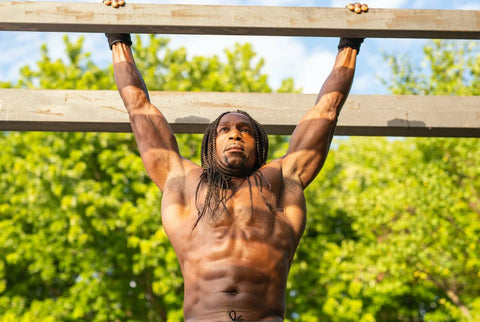Wide or Narrow Pull-Ups
Debunking the Age-Old Dilemma
In the world of fitness, few exercises hold the same level of mystique and effectiveness as the pull-up. This fundamental movement targets multiple muscle groups simultaneously, making it a staple in almost every strength training routine. However, one question has lingered in the minds of fitness enthusiasts for ages: wide or narrow grip for pull-ups? To settle this long-standing dilemma once and for all, we delve deep into the science behind wide and narrow pull-ups.The pull-up is undoubtedly one of the most versatile exercises, promoting upper-body strength, improved posture, and enhanced grip strength. It primarily targets the latissimus dorsi, commonly known as the "lats," which are the largest muscles in the upper body. Additionally, pull-ups engage the biceps, trapezius, rhomboids, serratus anterior, and other supporting muscles.
Where the debate arises is in the positioning of the hands during the exercise. Some argue that a wide grip provides a greater challenge to the lats, while others emphasize the benefits of a narrow grip in targeting the biceps and upper back. So, let's break down the advantages and considerations of each technique.
Wide Pull-Ups:
The wide grip pull-up involves placing the hands at a distance significantly wider than shoulder-width apart. This grip recruits a broader range of muscles, providing an excellent opportunity for overall upper-body development. By using a wide grip, the emphasis shifts towards the lats, particularly the outer portions, resulting in wider and broader-looking back muscles.

Moreover, wide grip pull-ups increase the range of motion, offering a deeper stretch in the lats and scapular muscles. This can be particularly beneficial for those seeking to improve mobility or recover from shoulder-related injuries. The wider grip also places less strain on the biceps, making it an excellent option for individuals looking to target their back muscles more specifically.
However, it is important to note that wide pull-ups have a higher level of difficulty due to the increased lever length and decreased mechanical advantage. This means that individuals may initially struggle to perform wide grip pull-ups if their upper body strength is inadequate. It is crucial to practice proper form and gradually increase the number of repetitions to avoid strain or injury.
Narrow Pull-Ups:
On the other hand, narrow grip pull-ups involve placing the hands closer together, typically shoulder-width apart or slightly narrower. This technique places a greater emphasis on the biceps and the middle portion of the back, often referred to as the rhomboids. Narrow grip pull-ups are considered by many experts to be a highly effective exercise for developing impressive biceps and promoting upper body strength.
By narrowing the grip, the range of motion decreases slightly, shifting the focus to the middle portion of the back. This targets the rhomboids, which are responsible for retracting and stabilizing the shoulder blades. Strengthening these muscles can greatly improve posture and help prevent postural imbalances commonly associated with sedentary lifestyles or desk jobs.
Narrow grip pull-ups also offer an advantage to beginners or individuals with weaker upper body strength. The reduced lever length and increased mechanical advantage make it easier to lift the body weight, allowing for more repetitions and better engagement of specific muscle groups.
Ultimately, the decision between wide or narrow pull-ups depends on individual fitness goals and preferences. Incorporating both variations into a comprehensive training program can provide well-rounded benefits. Combination exercises, such as alternating between wide and narrow grip sets during a workout, can maximize muscle activation and engagement throughout the entire upper body.
To further complicate matters, some fitness enthusiasts suggest using a neutral grip, where the palms face each other, as a middle ground between wide and narrow pull-ups. This grip targets the muscles slightly differently, providing an additional option for variety and continued progress.
Regardless of the grip width chosen, correct form remains paramount in extracting the full potential of this challenging exercise. It is essential to initiate the pull with the scapular muscles, engaging the lats, before utilizing the arms and biceps to complete the motion. Achieving a full range of motion, from a dead hang to the chin above the bar, ensures optimal activation of targeted muscle groups.
In conclusion, the wide or narrow grip pull-up dilemma need not be a contentious debate but rather an exercise in personal preference and fitness goals. While a wide grip emphasizes the lats and provides a broader range of motion, narrow grip pull-ups target the biceps and middle back. Incorporating both variations and experimenting with different grips can lead to a well-balanced upper-body workout routine. Remember, form, consistency, and gradual progression are key to achieving favorable results.











